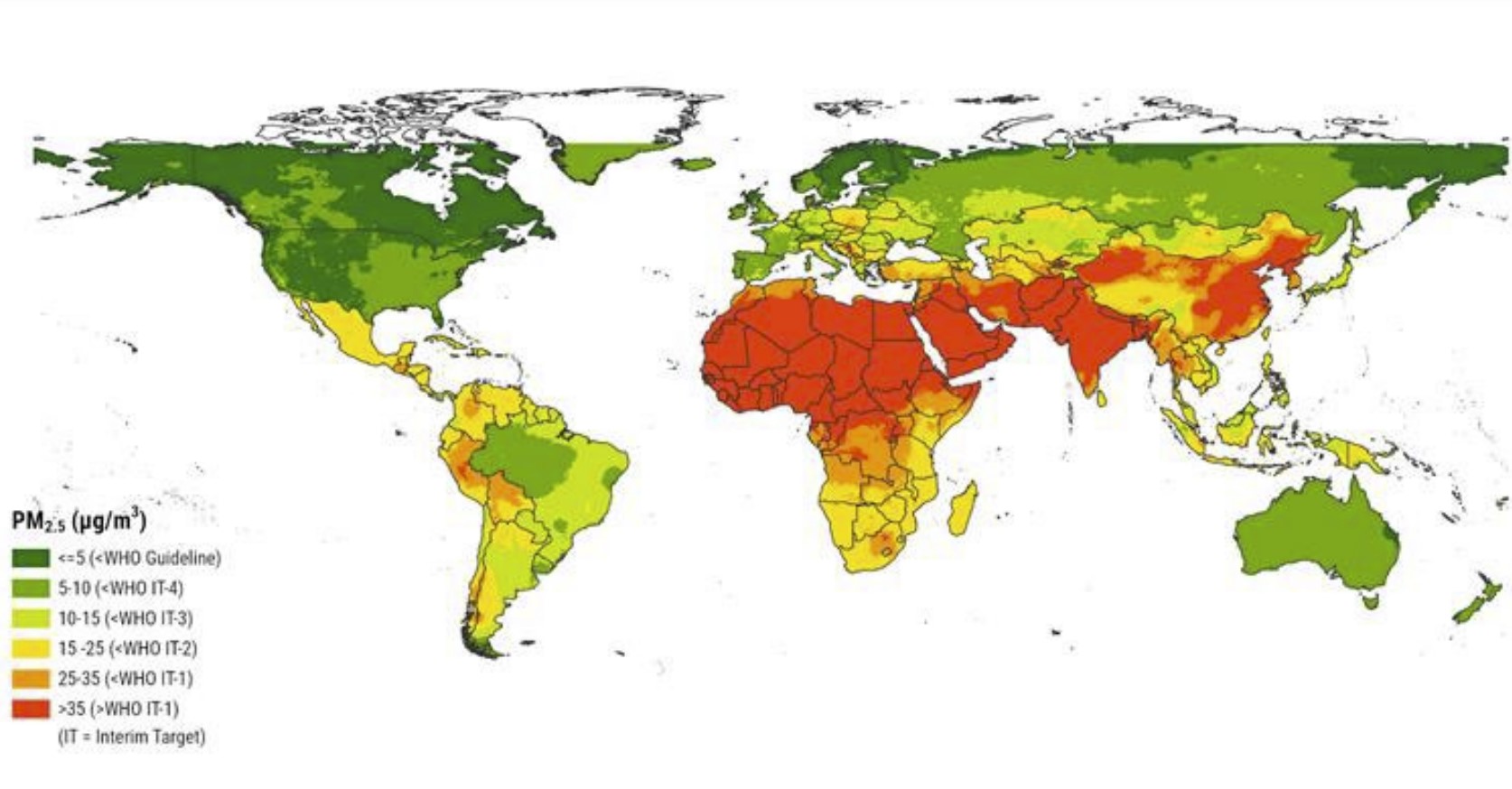With the recent lowering of Air Quality Guidelines, many countries face challenges in achieving cleaner air.
BOSTON, MASSACHUSETTS, March 2, 2022 – Last September, the World Health Organization (WHO) cut its guideline for annual exposure to fine particulate matter (PM2.5) in half, from 10 micrograms per cubic meter (µg/m3 ) to just five. According to a pair of special reports released today from the Health Effects Institute, these new lower guidelines mean that no country in the world is currently meeting that target. Further, fewer than half of the world’s countries meet the least stringent interim target of 35µg/m3 . The health impacts from air pollution exposure can be profound, cutting average global life expectancy by nearly two years.
The two special reports, How Does Your Air Measure Up Against the WHO Air Quality Guidelines? and How Does Air Pollution Affect Life Expectancy Around the World? provide interactive maps and data that showcase exactly how every country in the world measures up to the new Air Quality Guidelines. Results from the Air Quality Guideline report are based on data from HEI’s 2020 State of Global Air report, while the Life Expectancy report includes new analysis based on the Global Burden of Disease 2019, overseen by the Institute for Health Metrics and Evaluation at the University of Washington School of Medicine.
Air Quality and Life Expectancy
In 2019, air pollution was the fourth leading cause of death, responsible for nearly 7 million deaths around the world. On average, a baby born today can expect to have its life shortened by one year and eight months. Some nations saw much greater life expectancy loss, including Papua New Guinea (3.2 years), Niger, (3.1 years), and Somalia, (3 years). Many less developed and poorer countries face an extreme challenge in improving their air quality because they face the double burden of ambient PM2.5 air pollution from the burning of fossil fuels as well as household air pollution from indoor fires for cooking and heating. These regions and countries with the highest levels of air pollution would benefit the most from pollution reductions. Even small reductions in air pollution can provide health benefits and improved life expectancy. Visit the State of Global Air website to learn more.
The State of Global Air is a collaboration between the Health Effects Institute and the Institute for Health Metrics and Evaluation’s Global Burden of Disease project.

Fig. 1: Annual average PM2.5 concentrations in 2019 relative to the new WHO Air Quality Guidelines.
ABOUT HEI
The Health Effects Institute (HEI) is an independent, non-profit research institute that produces credible, high-quality science on air pollution and health for air quality decisions. It is funded jointly by the U.S. Environmental Protection Agency, industry, foundations, and development banks. HEI’s research is selected, overseen, and peer reviewed by leading subject matter experts on environment and health without involvement of HEI’s public or private sponsors.